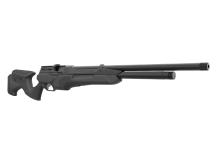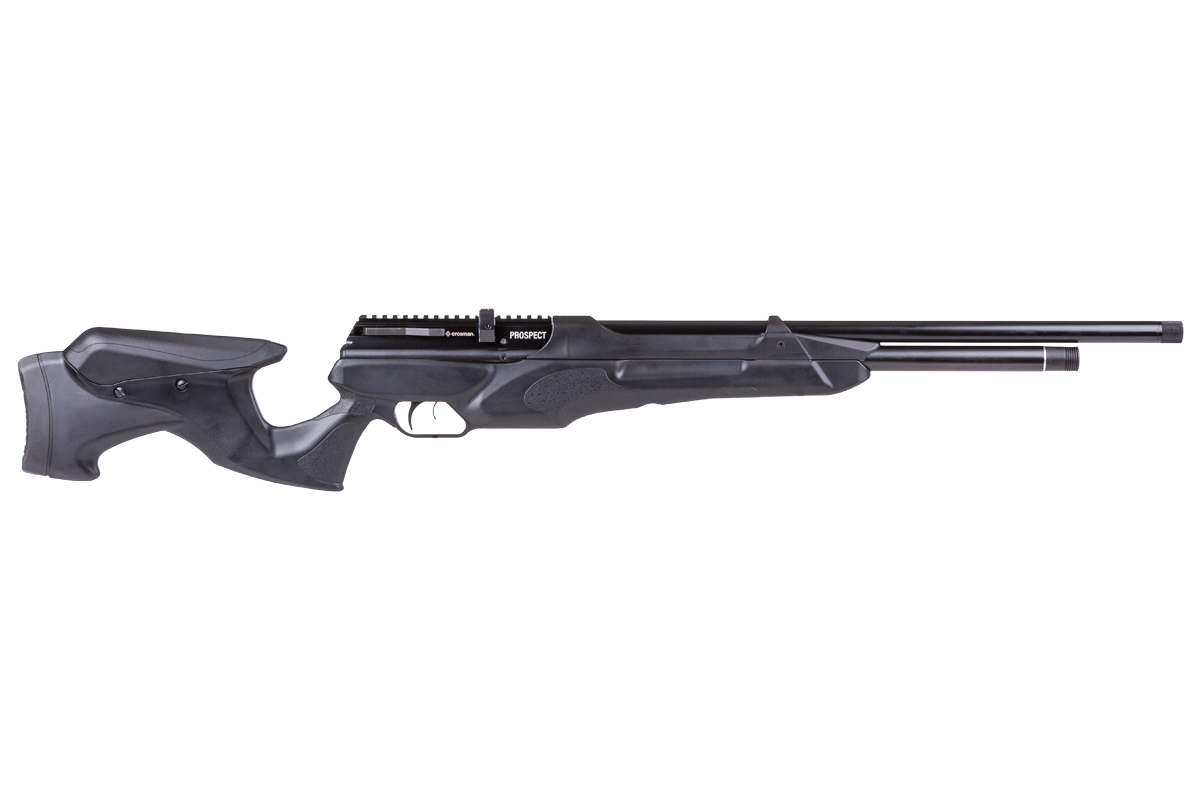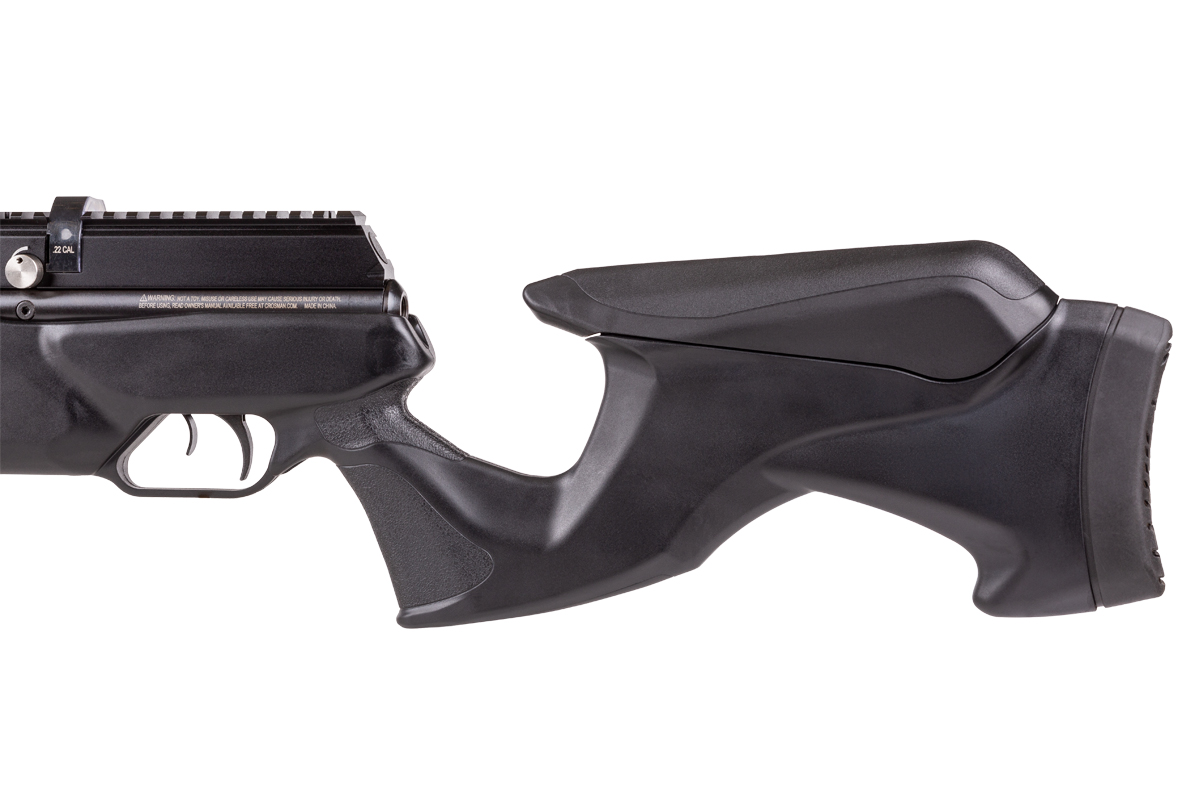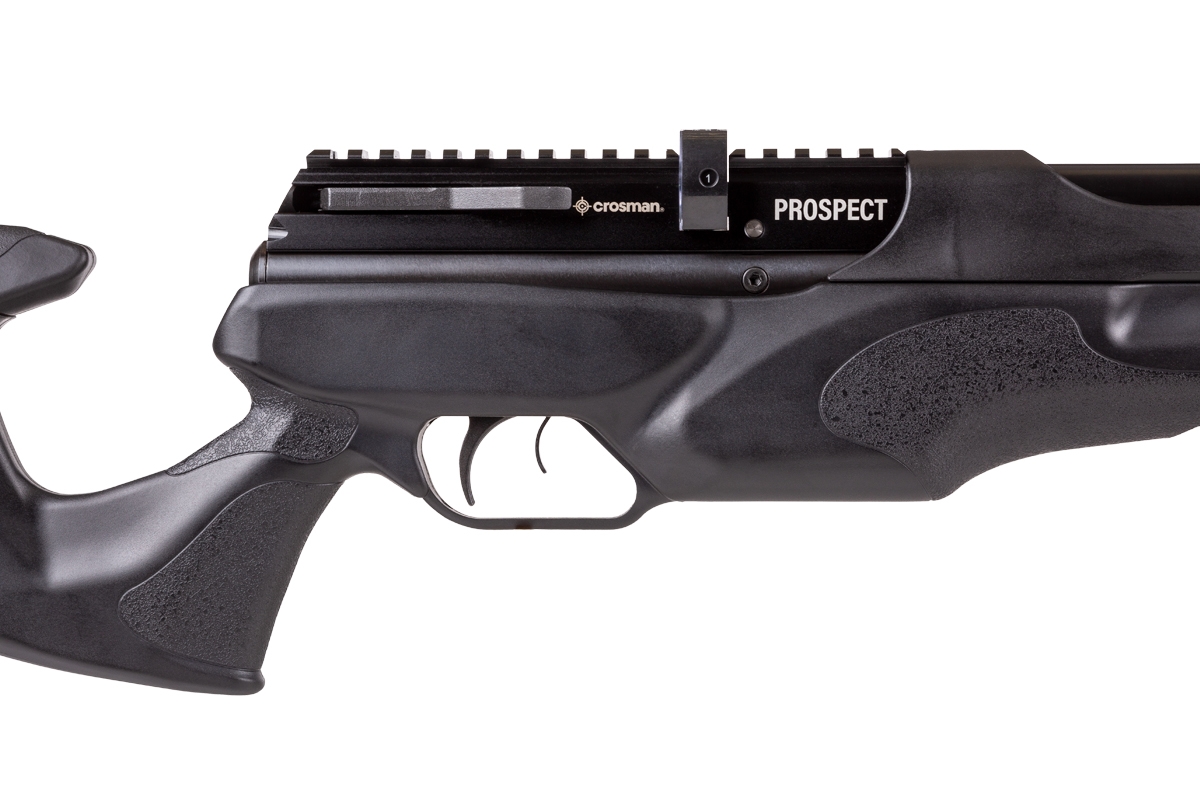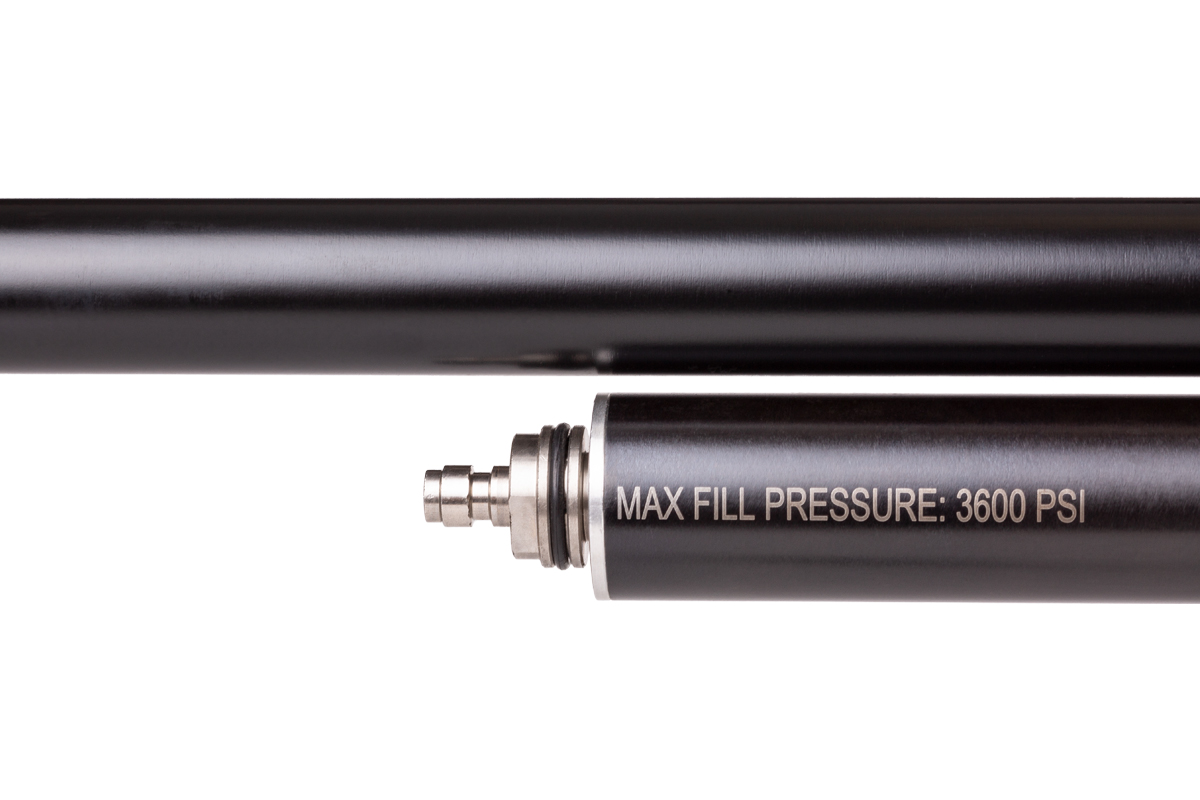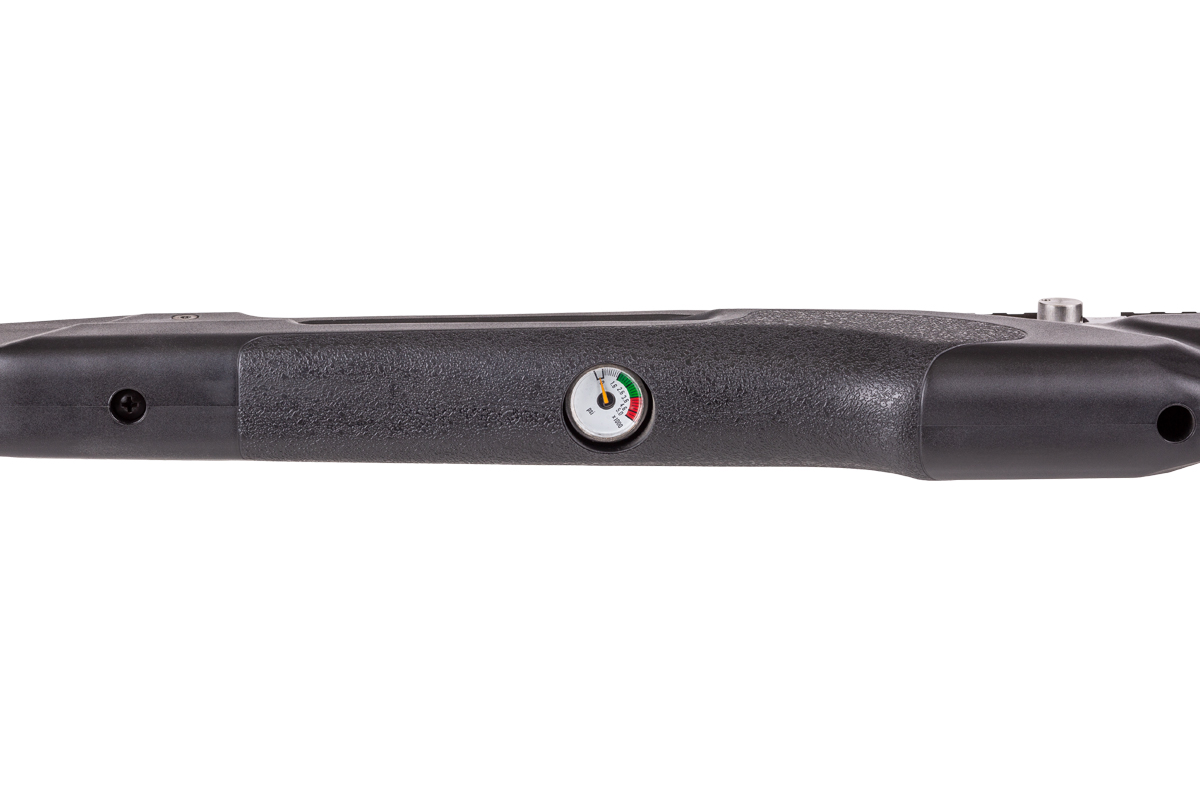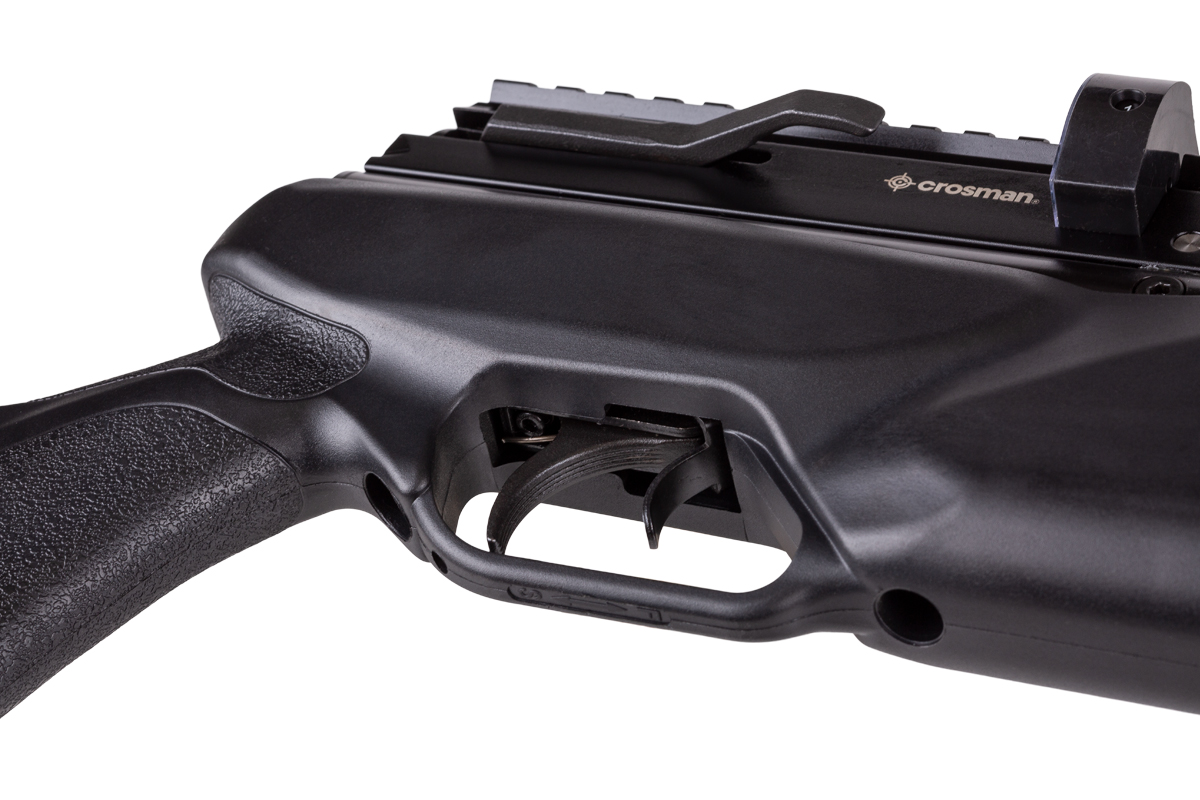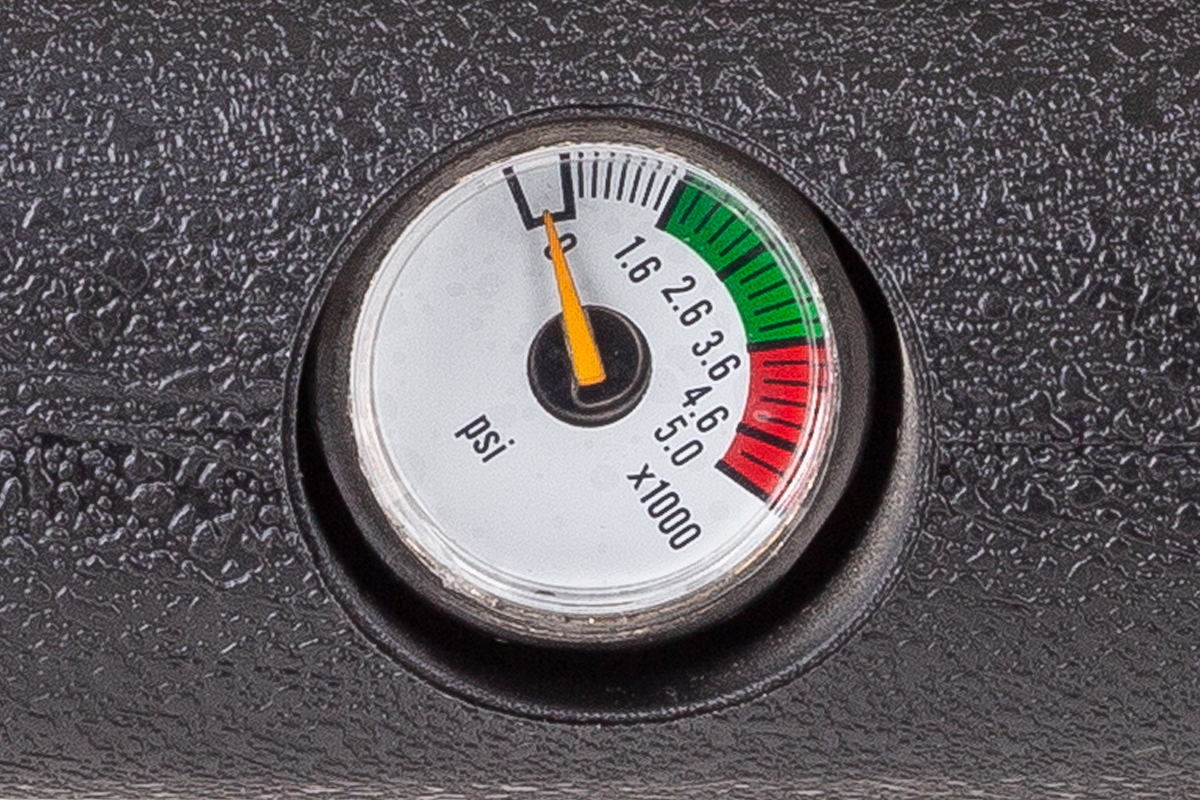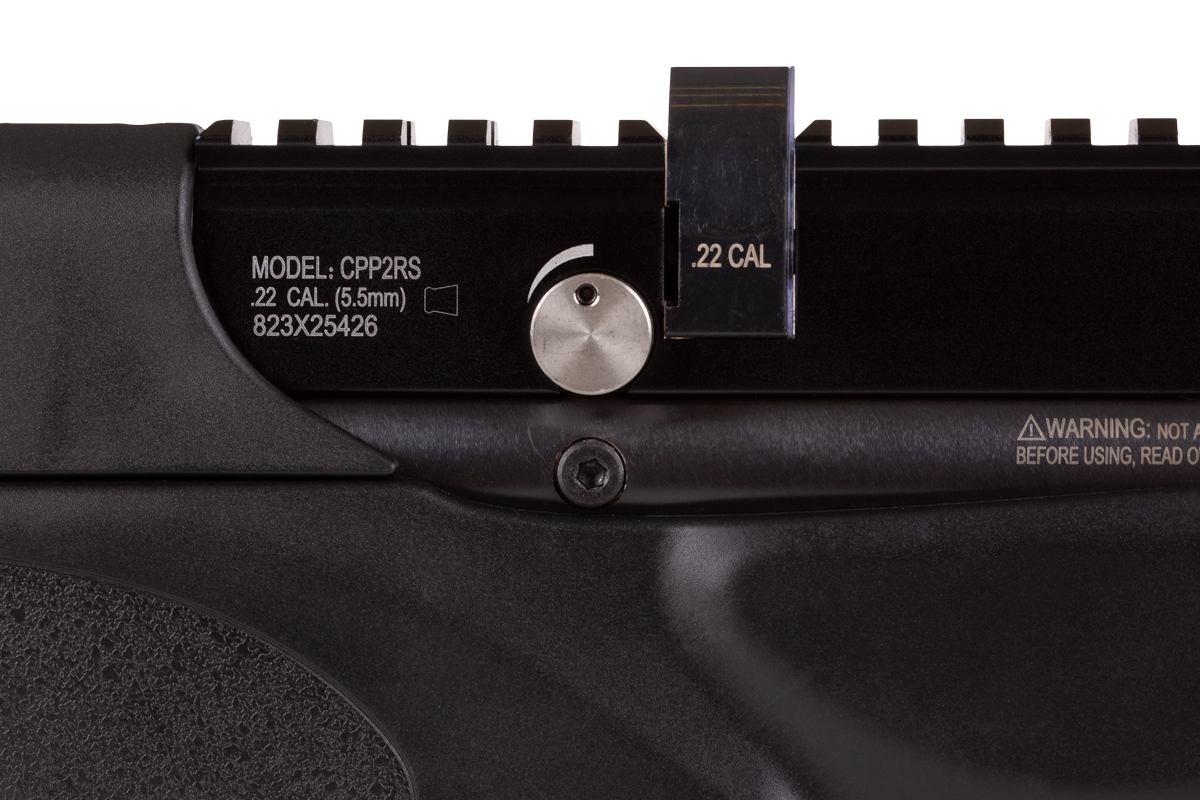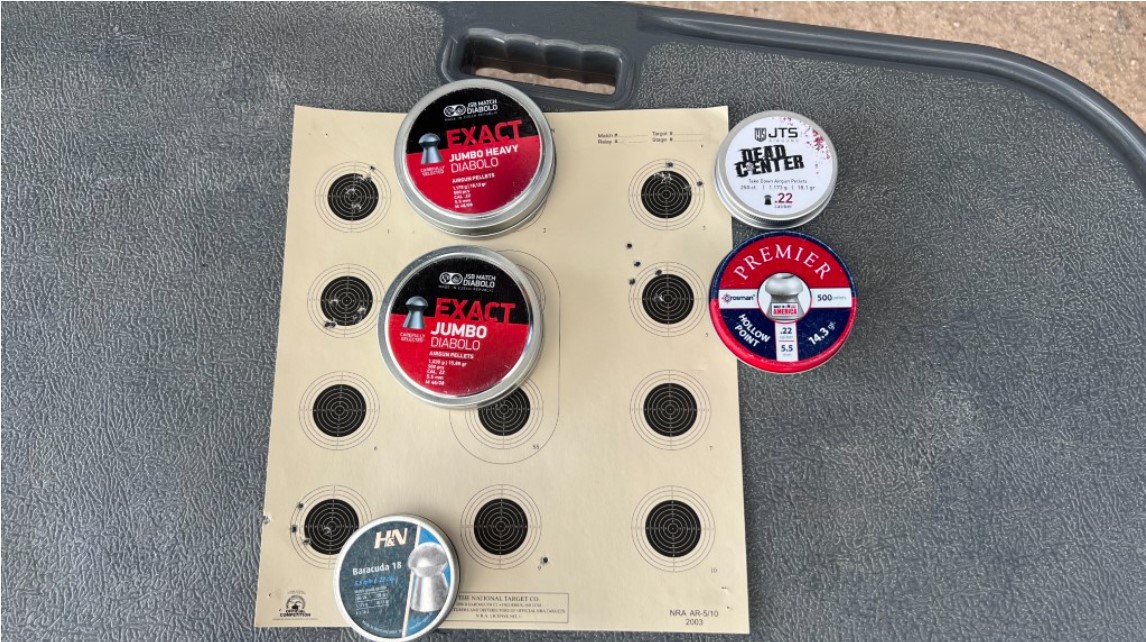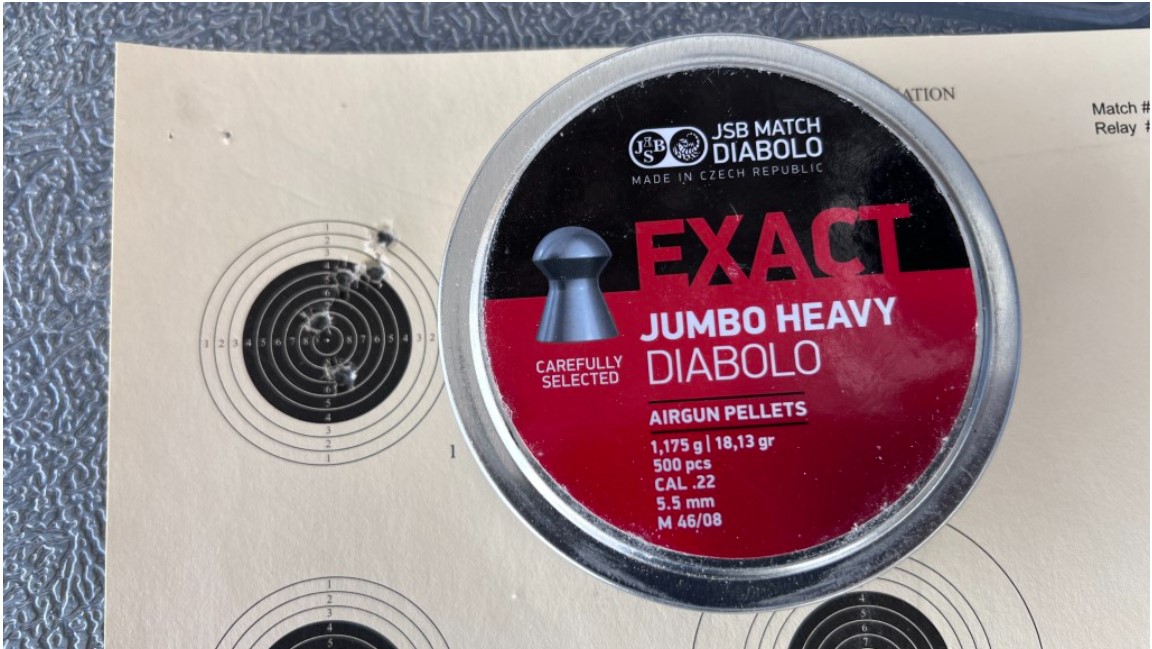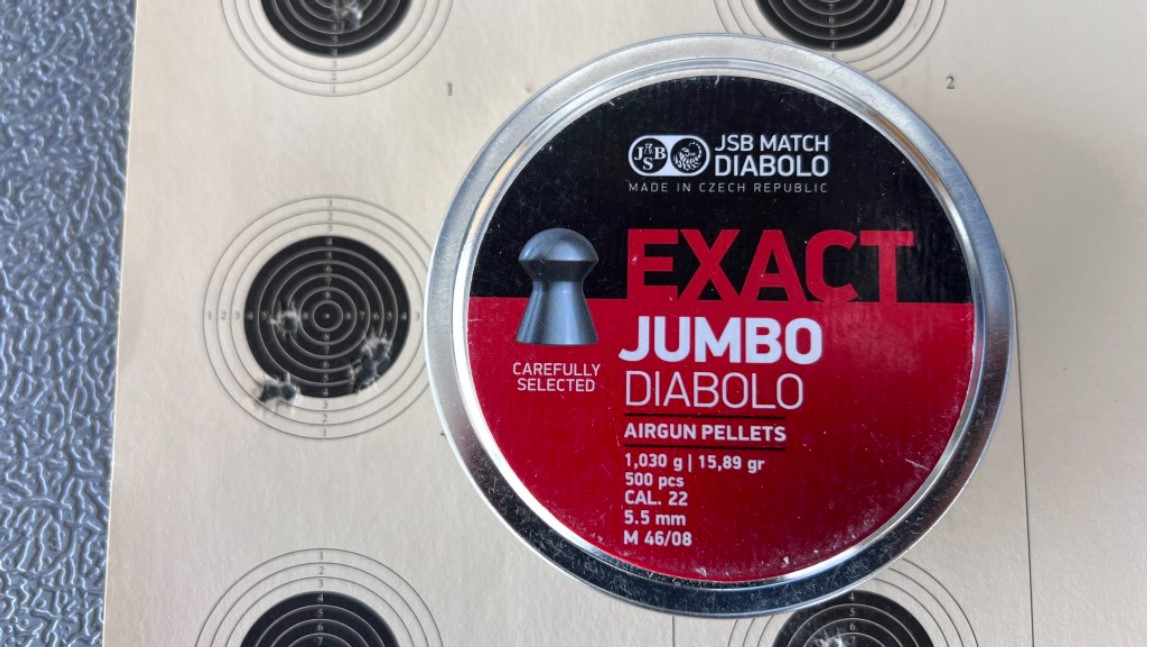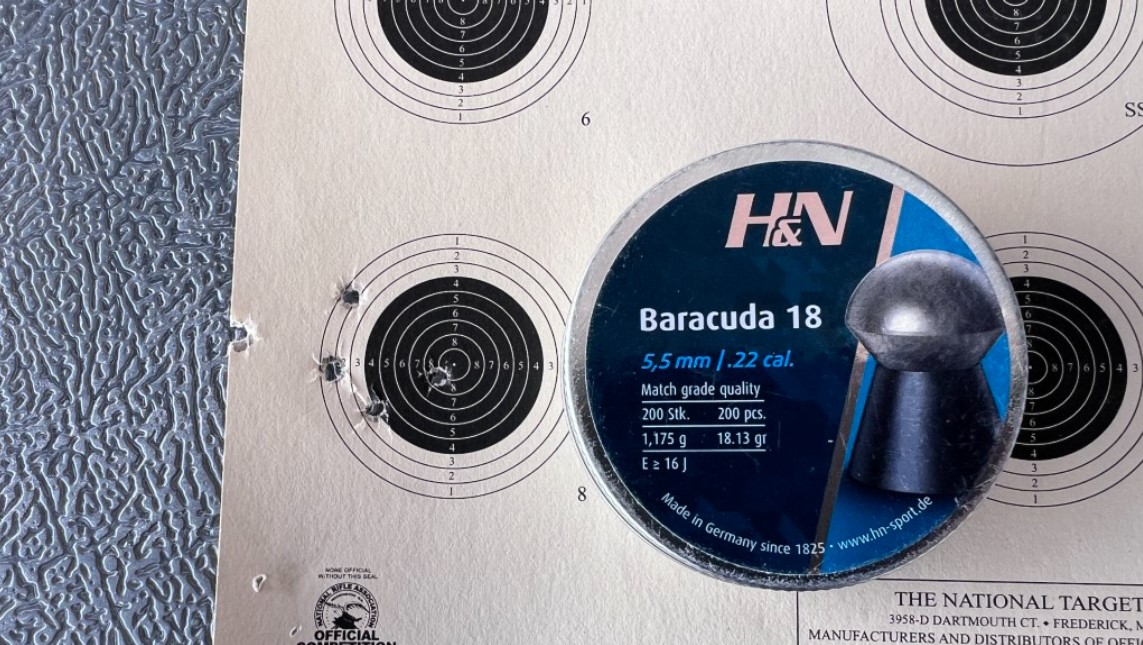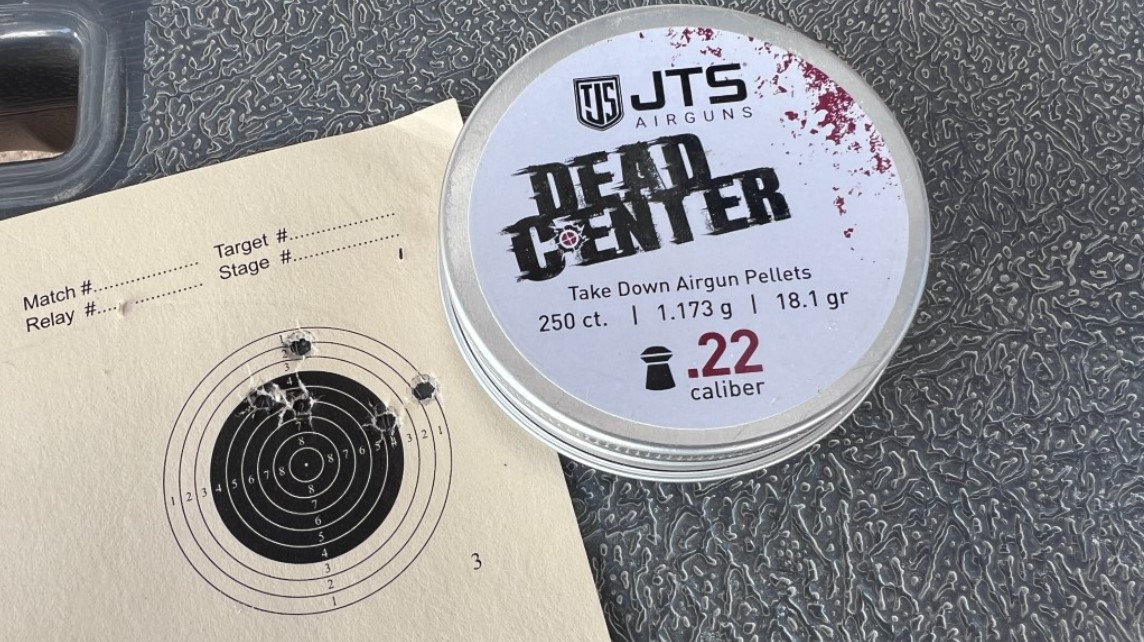Definitive Guide to Crosman Prospect
The new Crosman Prospect features an ambidextrous synthetic stock with an adjustable cheekpiece. Personally, we found the cheekpiece too high for low and medium scope mounts. If you're a shooter who prefers their scope as close to the bore as practical, something that the Prospect is actually able to deliver, then the cheekpiece may be too high as well. Additionally, the grip could be thicker. Both of these considerations are completely subjective, but they could also be factors you may want to consider. These were the only two aesthetic concerns we found when testing our sample.
The overall tale of the tape with the Prospect is as follows. It's available in .177 and .22 calibers. Its overall length is 42 inches and features a rifled steel barrel, side lever action, 1/2 UNF threaded muzzle, shrouded barrel, manual safety, two-stage adjustable trigger, slotted (weaver / Picatinny) scope rail, 10 shot magazine, and, as mentioned earlier, a regulated power plant. Lastly, it features an adjustable transfer port power adjuster, weighs in at a hefty 8.5 pounds before you mount an optic, and comes with a 5-year limited warranty.
Given the features and the results from our performance and accuracy testing, the Prospect would be well suited for backyard target practice, pesting, and small game hunting out to 50 yards.
Setup & Operation
The Crosman Prospect is a regulated PCP airgun that operates from a 3600 PSI fill. The air cylinder is not very large, so if you want to avoid using tanks and compressors, a hand pump would be a practical option.
There is a foster quick disconnect fill port at the front of the gun. Once you've connected your fill source, you'll need to monitor the single pressure gauge under the gun and stop once you've reached 3600 PSI. While we would prefer to have two gauges, one for the main tank and one for the regulator, we understand why Crosman would have opted for only a signal gauge. It probably helped keep the bottom line costs down, and given the price point of the Prospect, we are OK with their choice here.
The Prospect does not ship with any open sights, so you'll need to choose a suitable optic. We decided to go with a Hawke Vantage IR 4-16x50 AO scope. This scope comes in at around $280 and fits very well on the Prospect. We used the Hawke high mounts, which actually sat pretty low on the receiver and bore. As mentioned earlier, this is where the higher than needed cheekpiece gave us a little pause trying to get a comfortable eye relief between shots. Given that you could easily raise the cheekpiece if needed, it would have been better for them to give us a little margin here. But let's move on.
The Prospect fires from a 10-round spring-fed magazine. You'll need to load your preferred pellets into the magazine prior to taking any shots.
Once you've filled your airgun, mounted your scope, and filled your mag, it's time to get ready to shoot. Always make sure that your safety is on while loading and handling your airgun. To start, open the side lever, which pulls the pellet pusher out of the way and allows the mag to be inserted. When you close the bolt, the pellet pusher seats the pellet and locks into place.
To fire, you'll need to release the safety, acquire your target, and gently squeeze the trigger. The trigger is a two-stage trigger with a break in the 1.5 to 2 pounds range. It's very predictable and perfectly adequate for an airgun at this price point. If you would like to make some adjustments for it to be more to your liking, then you're in luck. The trigger is fully adjustable per the manual.
We'll get to shot count and performance next, but we wanted to mention that the gauge is really accurate and informative. While we don't have a 2nd gauge for our regulator, the "green" zone on the single gauge is right on point. If you stay within the green, you should still be on the reg. We were very pleased to see how well Crosman managed to match fill pressure to useable shots.
Back to operation. Once you've taken your shot and assuming you'd like to take another, simply pull back the cocking handle and return it forward to the locked position. You're ready for your next shot. You can continue to repeat the process until your magazine is empty.
Performance & Accuracy
We won't beat around the bush here. We were impressed with the shot count performance achieved by our test sample. We repeatedly got 40 shots on high power with an extreme spread of only 21 FPS and a standard deviation of only 5.3 FPS. We did all our performance testing with the JSB 18.13s, which delivered an average of 26.3 foot-pounds. Energy and velocity are right in line with what's on the box. This was very refreshing to see.
For those who want the ability to adjust power and tune their airgun for optimal velocity, the Prospect has a transfer port power adjuster as well as an adjustable hammer spring. While we did not tamper with the hammer spring, we did do some testing with the power adjuster.
On the lowest setting, we could not get a reading from our True Ballistic chronograph. Our guess would be well under 400 FPS. There seem to be 5 or 6 settings. While we could hear a faint "click" when adjusting the power knob, there didn't seem to be a noticeable stop for each click. Additionally, it did not seem to reliably "click" into a repeatable position. So, while there is a power adjuster, you may find that it takes a bit of trial and error to find the ideal sweet spot for your needs. We started getting some numbers in the high mid 500s at the second click. That rose to the low 600s at the 3rd click, mid to high 600s at the 4th click, and the mid 700s with the 5th click. At full power, we were getting 800+ FPS through 38 of the 40 shots almost all the time. Once you settle on a power setting, you will get consistent results from the regulator.
For accuracy, we tested several pellets at 50 yards. There was a light breeze, but all in all, it was a good day for shooting.
We shot the JSB 18.13s, the JSB 15.89s, the H&N 18.13s, the JTS Dead Center 18.1s, and the 14.3 Crosman Premier Hollow points. All the pellets except the 14.3 grain Crosman Premiers and the H&N 18.13s shot about the same 1"+/- group at 50 yards. The Crosman Premiers and the H&Ns did not do as well, delivering 2"+/- groups CTC.
While these results won't rival FX or higher-end options, they are more than acceptable for a sub $400 airgun. Could there be a better pellet out there? Probably. Hopefully, we'll have some more time to do some research and find out. But for now, we are genuinely happy with 1" +/- groups at 50 yards.
Overview of our 5 shot pellet test groups at 50 yards
JSB 18.13 - AVG 807 FPS, 26.3 FPE
JSB 15.89 - AVG 848 FPS, 25.4 FPE
H&N 18.13 - AVG 807 FPS, 26.3 FPE
JTS 18.1 - AVG 804 FPS, 26.0 FPE
Crosman Premier Hollow Point 14.3 - AVG 863 FPS, 23.65 FPE
Summing Up
This concludes our definitive guide on the new Crosman Prospect. In short, we found it to be a capable product with good shot count and consistency, producing repeatable 1" groups at 50 yards. You could probably see better results over time with more practice, finding the most optimal pellet, and some power tuning. But for basically an out-of-the-box experience, the new Crosman Prospect certainly delivers, in our opinion.
If you'd like more information on the Crosman Prospect or have questions in general, please don't hesitate to reach out and give us a call. We are always here to help.
